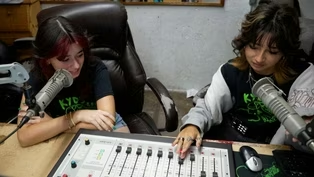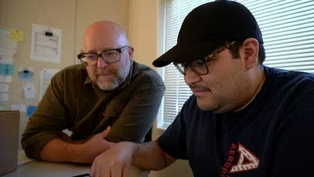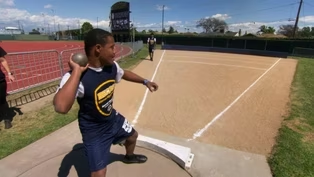Inside California Education
Redesigning High School: Rethinking the Factory Model
Clip: Season 6 Episode 7 | 5m 30sVideo has Closed Captions
See why education experts are rethinking the traditional high school model.
See why education experts are rethinking the traditional high school model.
Problems playing video? | Closed Captioning Feedback
Problems playing video? | Closed Captioning Feedback
Inside California Education is a local public television program presented by KVIE
Funding for the Inside California Education series is made possible by the California Lottery, SchoolsFirst Federal Credit Union, Stuart Foundation, ScholarShare 529, and Foundation for the Los Angeles Community Colleges.
Inside California Education
Redesigning High School: Rethinking the Factory Model
Clip: Season 6 Episode 7 | 5m 30sVideo has Closed Captions
See why education experts are rethinking the traditional high school model.
Problems playing video? | Closed Captioning Feedback
How to Watch Inside California Education
Inside California Education is available to stream on pbs.org and the free PBS App, available on iPhone, Apple TV, Android TV, Android smartphones, Amazon Fire TV, Amazon Fire Tablet, Roku, Samsung Smart TV, and Vizio.
Providing Support for PBS.org
Learn Moreabout PBS online sponsorship(bright music) - And she passed.
- We have to redesign high schools so that they will meet the needs that we have today and the aspirations that we have for our students.
- [Narrator] Linda Darling-Hammond knows what it takes to design successful high schools.
She's dedicated her career to shaping education policy.
Darling-Hammond is the president of the California Board of Education and an author of a report titled "Redesigning High Schools."
Created by the Learning Policy Institute, it calls for some significant changes to the traditional high school model.
- A hundred years ago, we were designing schools for compulsory education and mass education, and the factory model was the big thing of the time.
Henry Ford had just created the assembly line, and that was the design for the high school.
It was conceptualized as a way that you put kids on an assembly line, they would go to a different stop on the assembly line.
You know, every 45 minutes, it gets stamped with a lesson by the teacher.
Today, what we really are expecting of our schools is that first of all, there's a strong interest in equity, and we want every student to succeed, so we need to wrap around them with the services that they need.
- [Narrator] Darling-Hammond and her colleagues say one of the key features of a redesigned school is positive developmental relationships.
That means creating more meaningful relationships among students, teachers, and parents.
- Typically, you have, first of all, teams of teachers who share groups of students, so they plan around the curriculum and they plan around the students.
There's also an advisory system, so each teacher serves as an advisor to about 15 or 20 kids, and they get to function as a family and really come to support each other.
Hillsdale High School was one of the traditional comprehensive high schools, but they decided to redesign the school.
They broke up into small houses.
Instead of randomly going from one class to another, you are in a group of students who stay together, who have an English language arts teacher in common, a math teacher in common, social studies.
In these redesigned schools, parents can be involved not only in the traditional ways, but they're involved very explicitly in the education of their child on multiple occasions.
Those in many cases have home visits at the beginning of the year, they'll often have a positive set of phone calls home to meet with the parents.
If the parent is actually asked, what do you know about your child and what do they care about, what do they need or what are the things we need to know to support them well?
It's from a positive perspective in that it's about serving the needs of the student rather than calling home when the kid gets in trouble.
- [Narrator] Another thing they say makes redesigned high schools successful, a focus on a deeper learning curriculum.
- Most kids need a curriculum where they're gonna have to be able to problem solve on their own.
They're gonna have to self-manage.
In these schools, you typically see a lot of project-based learning, so you might read in your history textbook about a bunch of historical facts and you might know the dates and you might know that they happen.
But if you're in a class that's focusing on deeper learning, you know, teams of students might need to research, figure out why they happen, what was going on, how did that work, and then actually enact it for their classmates, write about it and explain it to their classmates.
What is going on in the world today?
Where are we seeing the same kinds of forces at play?
And look for the deeper roots of it.
- [Narrator] Darling-Hammond says deeper learning curriculums can also be found at schools that offer college or career pathways.
- In California, we've been fortunate to have an initiative called Linked Learning to expand pathways that represent different careers.
They are also industry-connected.
So if you're in the Life Academy in Oakland, it's a biological sciences and health professions academy.
You would have internships at nearby hospitals and clinics.
You would graduate by putting together a portfolio of your work, demonstrating that you deeply understand the skills that we've talked about.
Those allow school to be relational, to be meaningful, to be authentic, to be connected to students' lives and communities.
- [Narrator] Another key point of the report explores how redesigned high schools should make an effort to create safer, more inclusive environments.
- A safe environment is one in which kids feel safe to be who they are.
So one of the things we see happening now is a lot of schools are bringing in restorative practices, so some schools have set up wellness spaces, which are places where students can take a breath if they're anxious, if something has happened that really gets them upset.
What we see is not only gains in attendance and achievement for students, but also better mental health.
Kids have less stress, less anxiety, and more welfare as a whole.
(gentle music) - [Narrator] Darling-Hammond says successful education is a two-way street that builds upon students' experiences, cultures, backgrounds, and aspirations.
- We have a lot of redesigned high schools that have been extraordinarily successful.
It makes a big difference in whether kids can connect what they know to the curriculum, which is how we all learn, and then also whether they're engaged and wanna come to school each day.
The KYDS Are Alright: Student-Run Radio
Video has Closed Captions
Clip: S6 Ep7 | 5m 23s | Meet the student DJs playing music behind this student-run radio station in Sacramento. (5m 23s)
Next Step: Furthering Education for Students with Disabilities
Video has Closed Captions
Clip: S6 Ep7 | 6m 3s | Visit a transitional program for disabled students who have graduated high school in San Jose. (6m 3s)
Unified Sports: Inclusivity Through Teamwork
Video has Closed Captions
Clip: S6 Ep7 | 5m 22s | Discover how Unified Sports gives students with disabilities a chance to play sports in LA County. (5m 22s)
Providing Support for PBS.org
Learn Moreabout PBS online sponsorship
- News and Public Affairs

Top journalists deliver compelling original analysis of the hour's headlines.

- News and Public Affairs

FRONTLINE is investigative journalism that questions, explains and changes our world.












Support for PBS provided by:
Inside California Education is a local public television program presented by KVIE
Funding for the Inside California Education series is made possible by the California Lottery, SchoolsFirst Federal Credit Union, Stuart Foundation, ScholarShare 529, and Foundation for the Los Angeles Community Colleges.


